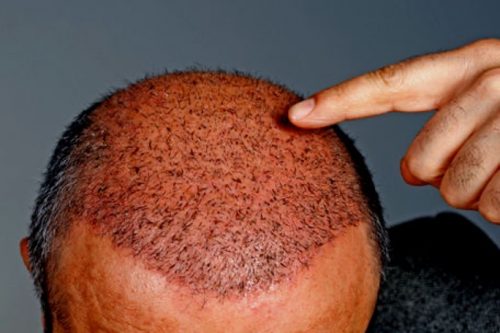Hair transplantation is the use of special equipment to cut out part of the tissue around the hair follicle completely, away from the original position of the scalp, and then transplant it to a position where the hair needs to be prepared and has the conditions for receiving the hair. It is called hair transplantation. This technology first appeared in Japan in the 1950s.

Hair transplantation helps – but not everyone can do it. A patient that qualifies for a surgical hair transplant must have hair on the occipital or above the mastoid, a large hairline, and the density must be sufficient. (In normal people, there are approximately 80-100 roots per square centimeter. And hair transplant surgery can be 30-50 roots per square centimeter), this hair transplant method uses the person’s real hair only, no synthetic hair. Or other people’s hair like other types of organ transplants. After a hair transplant, surgery hair can actually grow and grow long, and usually stays in the patient’s hair forever. This works even with people with hereditary hair thinning. The occipital and upper mastoid hair will not be damaged by the influence of DHT hormone, therefore, when the hair root cells are transferred to the location where the hair is thin, the new hair will not return to fall or become thinned again.
Causes of thinning hair / baldness
Hair loss or baldness may be caused by many reasons. Such as thyroid disease, postpartum conditions, after a high fever, fasting to lose weight, use of certain drugs, such as cancer drugs, some skin diseases, ovarian cancer-producing testosterone among others. But the causes mentioned above are found in less than 5% of baldness, the most common causes are hereditary.
Does hair transplantation take a long time? And is it dangerous?
In most cases, hair transplant surgery takes 4-6 hours to complete, depending on how much hair root cells are transplanted. Typically, 1000-2000 hair follicle cell transplantation takes about 4 hours (one carriage = one hair root or one clump, which will have 1-4 hairs or an average of 2 strands/clump. Surgery is not considered a major operation. Equivalent to going to get a tooth extraction, there is no general anesthesia, only local anesthesia is used. During the hair transplant, the patient is conscious all the time but does not hurt due to the anesthetic effect. In some cases, a mild antidepressant may be given to avoid fear, or during the process, the music will be played to allow you to relax and relax. In some foreign countries, during the production, someone played the piano in the operating room. Safety precautions are considered very safe and reliable.
Preparation before hair transplantation should be discontinued as follows.
The patient should stop the use of drugs that have been associated with blood clotting for at least 3 weeks, such as aspirin (aspirin), an anticoagulant. (Anticoagulants), Fish Oil (Fish Oil), Lecithin, Garlic Tablets, Vitamin E, Vitamin A. Always should abstain from alcoholic beverages of any and all types and no smoking for at least 1 week. If there are other types of medications that are taken regularly, the doctor must be informed before surgery.
Practice after hair transplant surgery
Within the first 24 hours after surgery Do not peel or scratch or rub on the hair growing area. Do not touch the wound, make a wound, absorb blood, wash your hair, or let the hair transplant area be exposed to water because the graft has a chance to drop. After surgery, wash your hair with room temperature water. (Do not use warm water or hot water) by using it as shower water gently. Use a mild shampoo to create a lather and apply gently on the hair growth without rubbing. Let the lather dissolve the dirt for about 5 minutes, then rinse it with water to remove the foam. As for the back wound on the occiput, wash it in the same way. But you can rub gently, do this for a week. Should wash your hair every day. At least once a day
After surgery, the wound area will have scabs. And lymphatic stains, if the flakes and lymph stains are very hard, apply extra virgin oil, such as olive oil, before washing your hair. Leave it for about 10 minutes and the flakes will come off more easily when washed off. Can do both a planted wound and an occipital cut wound.
There may be a pain in the occiput (in the event of surgery) and can lie down normally. Use a U-shaped pillow (used on airplanes) to support the nape of the neck to prevent pressure on the occipital wound. Or use a towel to roll and place it to support the neck instead It is not recommended to sleep on your side or on your stomach. Because it will make the face swollen in the following days
Patients will be given painkillers, antibiotics, and sleeping pills (enough for sleeping pills for two nights after surgery). Patients will be able to carry out normal activities from the next day. Avoid activities that cause sweating. Such as exercising, saunas, steam, avoiding dust and smoke. And do not swim for 1 month, you can eat normally. For hair styling products, they can be used a week after surgery, but avoid direct contact with the wound. Try applying it only at the ends of the hair until the wound heals red (average 2 weeks).
Interesting Related Article: “The Best Countries To Get A Hair Transplant”

